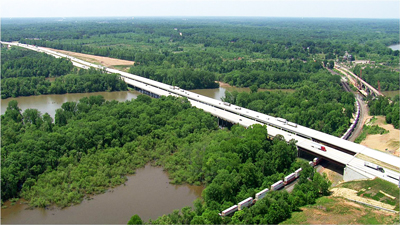“A combination of low interest rates; wealth effects stemming from a booming stock market and rising home prices; surging energy production; and expanding industrial output has helped position the U.S. economy for more rapid growth during the next several quarters,” says Associated Builders and Contractors Chief Economist Anirban Basu. “This will lead to more robust recovery in the U.S. nonresidential construction industry, which has also been aided by stable materials prices and improving commercial real estate fundamentals.”
In a collaborative forecast with his American Institute of Architects and National Association of Home Builders counterparts, Basu projects 7 percent nominal nonresidential construction market growth this year, despite challenges in the public construction segment.
“We continue to have an optimistic outlook for the commercial and industrial sectors for the rest of this year and into 2015,” adds AIA Chief Economist Kermit Baker, PhD, Hon. AIA. “However, until we see state and local governments ramp up spending for new education, health care and public safety structures there likely won’t be a widespread acceleration in spending for the entire industry.”
“Economic pick-up in the second quarter was coupled with a return in housing construction,” notes NAHB Chief Economist David Crowe. “We expect continued modest growth in housing construction as employment rises and more household formations take place. However, continued tight supplies of labor and land will put upward pressure on new home prices.”
DESIGN-BUILD DELIVERY CROSSES 50 PERCENT THRESHOLD ON MAJOR PROJECTS
| DBIA officials cite the inherent value design-build methods bring to projects across the construction sectors, including transportation. The Institute honored the Yadkin River Bridge—a 2,900-ft., twin structure along the Interstate 85, Charlotte–Greensboro, N.C., corridor—with a 2014 National Award of Merit. Flatiron Construction Corp. led the design-build team credited with delivering the North Carolina Department of Transportation project under its $136 million budget. |
Research indicates that more than half of construction projects above $10 million are being completed through design-build, the highest level yet for the delivery method offering an alternative to traditional competitive bid-build. A new Design-Build Institute of America report, “Design-Build Project Delivery Market Share and Market Size,” also finds that use of design-build had remained steady since a growth spike at the end of the last decade, and is especially high in military projects.
“The growing use of design-build is not surprising,” says DBIA Executive Director Lisa Washington, CAE. “Throughout the last five years, and even through the recession, we’ve seen a large increase in demand for information and training on design-build best practices. Owners have been turning to design-build delivery because they recognize the inherent value it brings to any project in any sector of any size.”
The use of design-build in the nonresidential market spiked from 29 percent in 2005 to 36 percent in 2008. Throughout the recession, adoption of the delivery method continued to grow; with the economy stable and slowly recovering, use of design-build has held steady at around 40 percent the last three years, “Design-Build Project Delivery” authors find.
Reed Construction Data/RSMeans Consulting analyzed detailed data on nearly one million construction projects state by state, noting design-build most prevalent on the West Coast. States where owners and contractors deploy the delivery method at the highest rate are Oregon (70 percent), California (59 percent) and Washington (56 percent). Military agencies use design-build on 81 percent of major projects. Even without such work factored, Oregon remains the top state for design-build due to multifamily residential and industrial sectors. To the east, Michigan has especially shown widespread adoption of the project delivery method.
“[Our] segmentation analysis now includes nine complete years of actual history, statistically supporting observation of trends at the state and industry sector segment levels,” says Tim Duggan, director of Custom Solutions for Reed/RS Means, one of North America’s largest information providers to the design and construction industry. RSMeans’ proprietary database served as the basis for the study, coupled with other publicly and privately available data sources. “Design-Build Project Delivery Market Share and Market Size” is available for free download at www.dbia.org/resource-center/documents.
